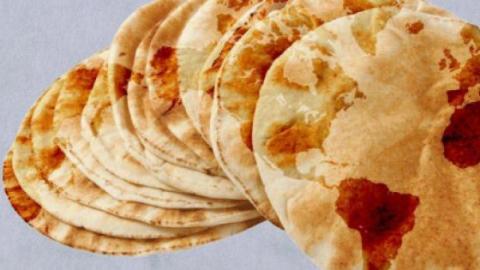Tammam Azzam, a Damascus-born artist, starts his interview with Syria Untold with an emphatic statement about his contributions to the revolution: “Nobody gives anything to the revolution, it is the revolution that gives us all.” He ascertains that the revolution to him, as to many other Syrians, has become a second rebirth. “Its effect can not be seen in an artwork. The magnitude of the event, and the crime, is beyond us as artists. The revolution, by its very logic is an agent of change, and even those who stood against it, will feel this change.”

Azzam’s works, despite these aforementioned sentiments, have certainly become an integral representation of the revolution to Syrians and non-Syrians alike. His paintings have been exhibited in many capitals around the world, and his blood-red compositions have become well known. In fact red, as a color seems to be constant motif in Azzam’s work: a map of Syria bleeding, a painting of the Syrian spring represented by a red butterfly, and his famous painting of Syrian clothes, blood strewn, and left to dry. “In the early days of the revolution, I sat down to draw a scene of laundry drying on cables on Daraa’s balconies. I hadn’t known yet that our laundry will be draped in blood from now on.”
This was a continuation of a project the artist was working on before the revolution. Azzam wanted to imagine the laundry and furniture left behind by people who leave their homes. His works are a mixture of different painting techniques, although lately he has been drawn to digital art. Nevertheless, his earlier “analog” works are still integrated in his newer works through scanning, retouching and mixing them with digital photography from his surroundings.
His works are very vocal in their rejection of guns killing Syrians everyday. They show balloons, once a dreamy toy for young children, as bombs falling from the sky, and the dove of peace, holding in her beak a bullet alongside the olive branch. He also condemns the crime, not as one against Syrians, but as a universal crime against humans. To that end, he borrows Goya’s famous painting, “The Third of May 1808”, which shows the execution of Spanish civilians, and transports it to the Syrian context with a simple comment: “How many days in Syria are like the third of May.”

Azzam’s work also utilizes dark sarcasm to deliver his message, like in a painting showing a replica of the Statue of Liberty built out of broken Syrian houses. The tragedy nevertheless, gives way to hope, rather than despair. Hope can be seen with Klimt’s The Kiss, overlayed on bullet riddled walls, flowers blooming out of a bomb, and children surrounding a bomb crater raising a victory sign. These paintings, and many others, show the artist’s hope for the country despite all the destruction.
Today, the artist says that the only people he thinks about are those “paying for our freedom with their lives. These people, even if their bodies have vanished, will always live in an artist’s work through their words and their actions. The blood stained loaf of breads will always be a remembrance of those who died waiting at the door of a bakery and instead of bread, they found a bomb.”



